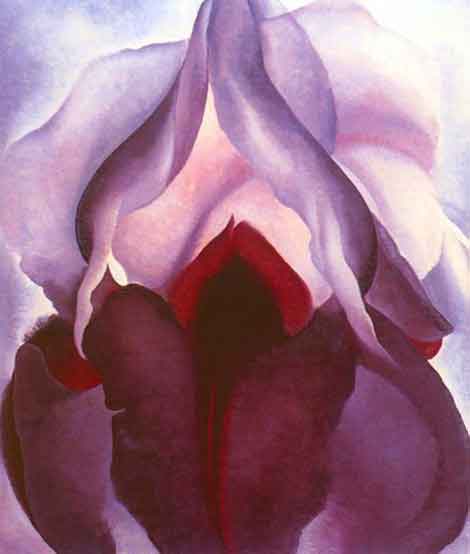If sex has been around in art for so long, then why do O’Keeffe’s vulvalistic flowers generate so much special negative attention, as in the phrase, “Yeah, she’s good but I don’t like her—too obvious, too sexual.”? Is this because her sensually-charged paintings of innocent desert flowers remind one (deep deep in the tunnels of imagination) of what he faced last night with his wife, or a one-night stand? Or is it because O’Keeffe’s painted flowers resembles a vulva? (Okay, now it’s out there on the table—splat—the VULVA, the mighty vaginal orifice, endless black hole of creation, eater of countless little pink dicks, the red flag that demands action from the male member or else he is an ineffectual pussy.) Can’t “IT” be just a pretty flower?
I hoped we had advanced, you know, gotten over this hump where every skyscraper in New York makes you feel good, but all the swimming pools in LA just make you want to take a nap.
Don’t get me wrong—I am pleased that Art has taken up the gauntlet of sexual satisfaction so seriously. Take for instance, the female breast. From her first ponderous appearance on the chest of Venus of Willendorf to Wesselmann’s pop-art target tits, including a bevy of thinly disguised religious exposures, she has been a welcome player in the art arena. The same can be said for the male phallus, which although sensibly disguised dominates everything from the humble frankfurter to the Empire State building rather elegantly expressed in Warhol’s most endearing movie, Empire. Not until Conceptual art—the only art that has rid itself of any pleasure having to do with sex or beauty—did the role of the sex object come to an end.
What is art if it is not expression beyond the normal, beyond the cage of our perceptions? O’Keeffe’s line is more beautiful, fuller and more ecstatic than is natural, just as Baryshnikov’s leap is higher than humanly possible. That little bit of genius, that extra grace applied to a common seashell, that subtle emphasis that shadows the simple curve of a leaf effects us so slightly yet so deeply that we are moved passionately without understanding why.
Apparently this terrifies us and the only way to end the terror is to give it a name, SEX. But why call it sex? Neither O’Keeffe’s flower nor Baryshnikov’s leap is sexy—they are ecstatic, thrilling, an inch closer to the divine. Imprisoning O’Keeffe in the camp of “female” sexuality is a put-down so that no one has to feel threatened by her simple combinations of beauty and passion. It is a shameful attempt to relegate Georgia O’Keeffe to the realm of porn in order to protect their terrified sensibility from the iron talons of her talent.
RETROSPECT

Georgia O’Keeffe, from the “Flower of Life II” series

